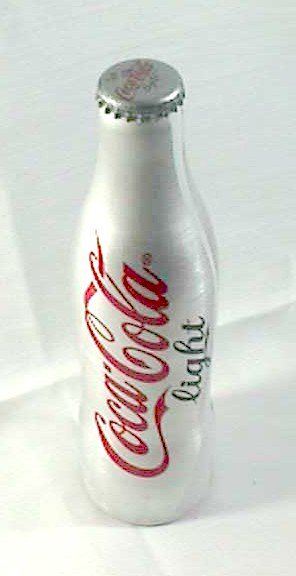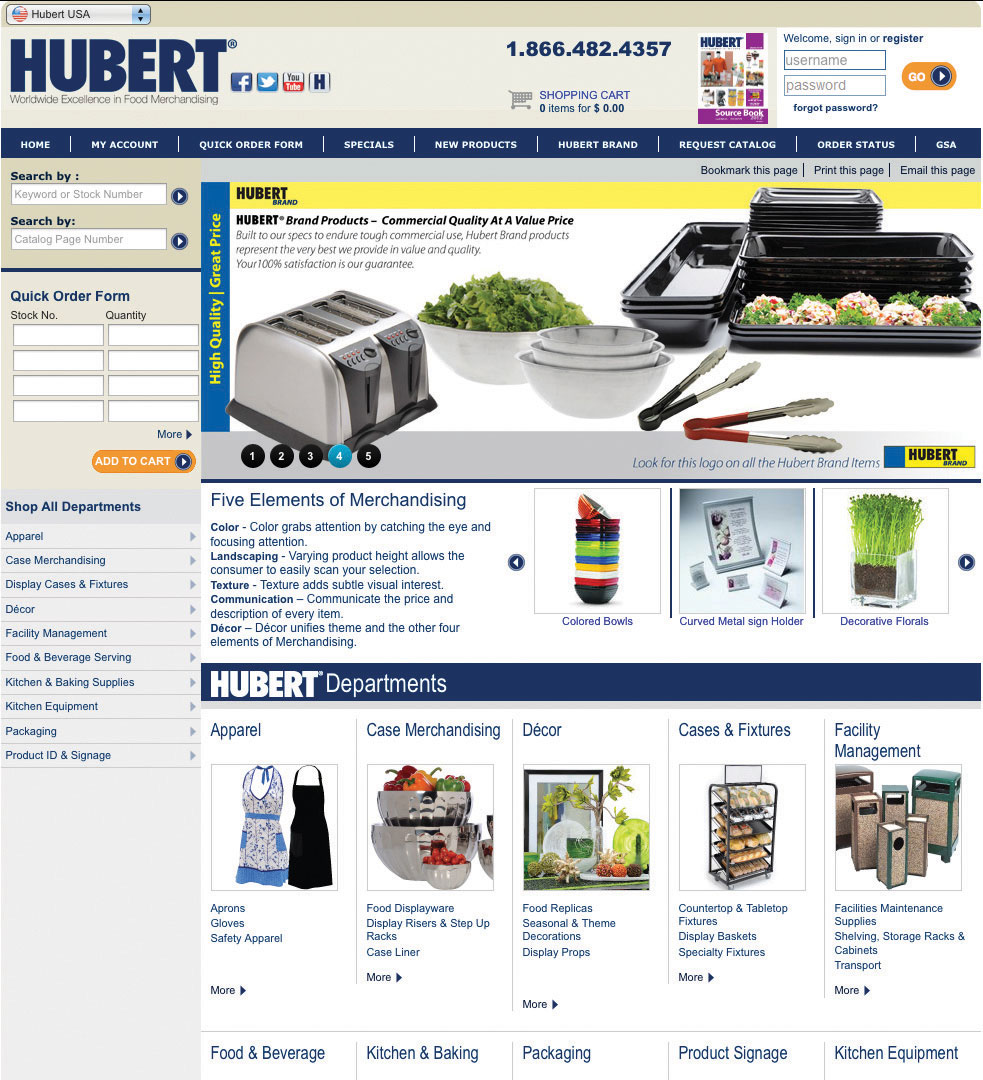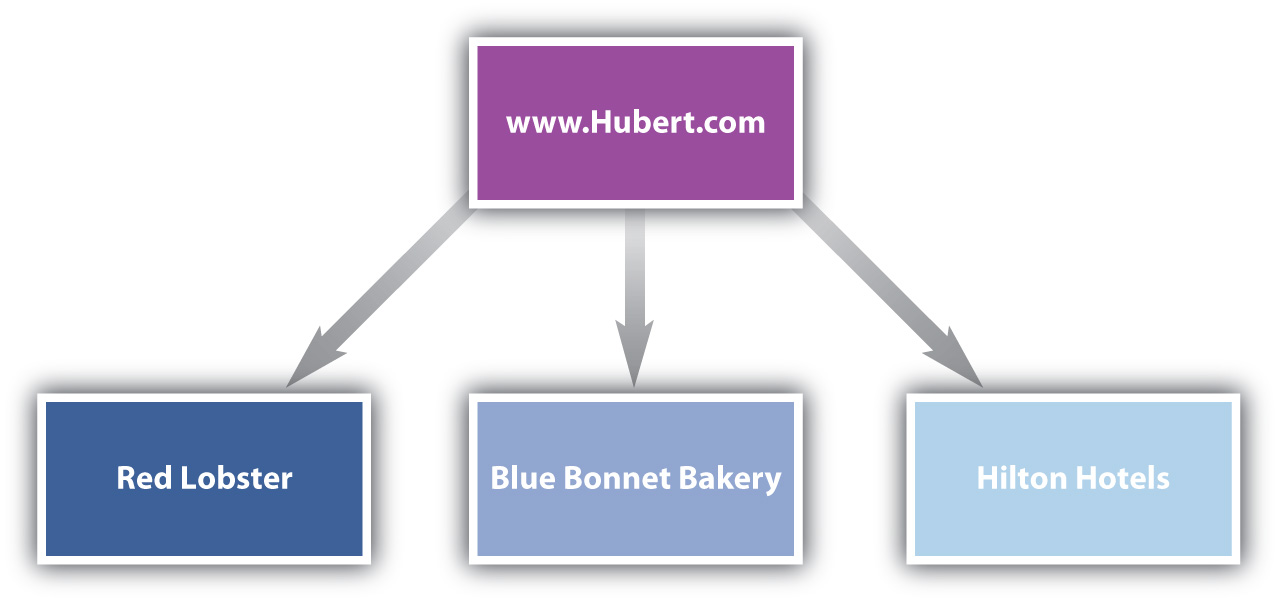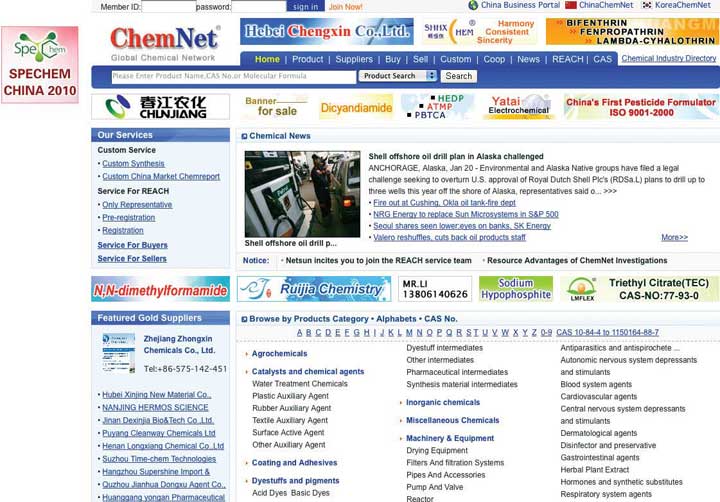Our talented team know how to excite, inspire and engage. With backgrounds in events, entertainment and travel, we’re full of ideas for amazing prizes and unforgettable incentives!
At Fulcrum, we all come to work every day because we have a shared love of travel and delivering once-in-a-lifetime experiences.
Our team meetings are buzzing with fresh ideas, brand new experiences and glowing feedback from our travellers. We know what makes a great incentive, we have an encyclopaedic knowledge of the best experiences around the world, and we have an ever-expanding ‘little black book’ of the most exclusive suppliers in the business.
In addition to our creative ideas and experience, we know that our clients value our expertise and dedication to solving problems rather than creating them. Prizes and incentives are our world, but we understand that our clients have other priorities, so we make sure we’re delivering our ideas on-time, on-budget and on-brand. We thrive on tight deadlines, logistical challenges and creating perfectly tailored solutions, without the headaches!
About us
Perfect solutions every time
As a leading marketing Agency, we’re immensely proud to work with brands and agencies across a huge range of sectors and industries, giving us an unrivalled breadth of experience.
we have created and fulfilled prizes for promotions and activations across the world.
Our aim: help our clients achieve their goals through our experience and expertise, taking the stress and hassle out of prize fulfilment.
We work for both direct brands and agencies, often in collaboration or with other specialist agencies and partners. Many of our clients have existing assets – from festival tickets to sports hospitality – which we help them to build into the best possible prize packages. Others want to create unique, eye-catching marketing and btl content around their prize winners. We can deal with winners from any country and in any language; we can provide a full btl management service; we can even source camera crews for content capture.
Whatever your brief, we’ve got it covered.
SALES INCENTIVES
Driving sales and performance through tailored, flexible incentive programmes
With pressure always on to drive sales and performance, sales incentives are an essential part of rewarding achievement within many companies. From internal staff reward programmes to dealer and channel incentives, there’s no better way to create a happy, engaged and motivated workforce.
Our main goal is to understand your people and what makes them tick. From hundreds in a call centre team to a small on ground sales team, a clear overview of your audience is the most important part of the process. By taking a best approach, offering maximum choice and flexibility, we create incentives which are targeted, effective and tailored to your team.
Whether it’s sales rewards, dealer incentives or channel incentives, drop us a line; we’d love to help you drive sales with our fresh and creative approach to prizes and incentives. From once-in-a-lifetime holidays to mini-breaks, high-street vouchers and designer goods, you can rest assured that with Fulcrum you’re in safe hands.
24 hour turnaround for urgent briefs
Topline ideas within 2 hours if needed
Competitive fixed quotes with no hidden costs
Expert Winner Management and Fulfilment
Retail Marketing Program | engagement marketing Team bosari
Managing New Products: The Product Life Cycle
7.2 Managing New Products: The Product Life Cycle
Learning Objectives
- Explain how organizations manage offerings after being introduced to the marketplace.
- Explain how managing an offering may be different in international markets.
- Explain the product life cycle and the objectives and strategies for each stage.
Over 20,000 new offerings, including convenience foods, health and beauty aids, electronics, automobiles, pharmaceutical products, hotels, restaurants, and so on, enter the marketplace each year. For example, in 2006 almost 1,400 food products making a “whole grain claim” were introduced (Roskelly, 2010). Other recent new product introductions include many technological products such as Nintendo’s Wii, iPhones, and digital video recorders (DVRs); many new personal care products such as new fragrances of shampoo and conditioner and new flavors of toothpaste; and new convenience foods such as frozen meals, “100 calorie pack” snacks, and cereal bars (Hunter, 2008).
Video Clip
Oreo 100 Calorie Pack
The 100 Calorie Packs offered by Nabisco proved to be extremely popular.
Once a product is created and introduced in the marketplace, the offering must be managed effectively for the customer to receive value from it. Only if this is done will the product’s producer achieve its profit objectives and be able to sustain the offering in the marketplace. The process involves making many complex decisions, especially if the product is being introduced in global markets. Before introducing products in global markets, an organization must evaluate and understand factors in the external environment, including laws and regulations, the economy and stage of economic development, the competitors and substitutes, cultural values, and market needs. Companies also need expertise to successfully launch products in foreign markets. Given many possible constraints in international markets, companies might initially introduce a product in limited areas abroad. Other organizations, such as Coca-Cola, decide to compete in markets worldwide1.
The product life cycle (PLC) includes the stages the product goes through after development, from introduction to the end of the product. Just as children go through different phases in life (toddler, elementary school, adolescent, young adult, and so on), products and services also age and go through different stages. The PLC is a beneficial tool that helps marketers manage the stages of a product’s acceptance and success in the marketplace, beginning with the product’s introduction, its growth in market share, maturity, and possible decline in market share. Other tools such as the Boston Consulting Group matrix and the General Electric approach (see Chapter 2 “Strategic Planning” for discussion) may also be used to manage and make decisions about what to do with products. For example, when a market is no longer growing but the product is doing well (cash cow in the BCG approach), the company may decide to use the money from the cash cow to invest in other products they have rather than continuing to invest in the product in a no-growth market.
The product life cycle can vary for different products and different product categories. Figure 7.8 “Life Cycle” illustrates an example of the product life cycle, showing how a product can move through four stages. However, not all products go through all stages and the length of a stage varies. For example, some products never experience market share growth and are withdrawn from the market.
Figure 7.9
Diet Coke changed its can to keep from getting outdated.
Wikimedia Commons – public domain.
Other products stay in one stage longer than others. For example, in 1992, PepsiCo introduced a product called Clear Pepsi, which went from introduction to decline very rapidly. By contrast, Diet Coke entered the growth market soon after its introduction in the early 1980s and then entered (and remains in) the mature stage of the product life cycle. New computer products and software and video games often have limited life cycles, whereas product categories such as diamonds and durable goods (kitchen appliances) generally have longer life cycles. How a product is promoted, priced, distributed, or modified can also vary throughout its life cycle. Let’s now look at the various product life cycle stages and what characterizes each.
The Introduction Stage
The first stage in a product’s life cycle is the introduction stage. The introduction stage is the same as commercialization, or the last stage of the new product development process. Marketing costs are typically higher in this stage than in other stages. As an analogy, think about the amount of fuel a plane needs for takeoff relative to the amount it needs while in the air. Just as an airplane needs more fuel for takeoff, a new product or service needs more funds for introduction into the marketplace. Communication (promotion) is needed to generate awareness of the product and persuade consumers to try it, and placement alternatives and supply chains are needed to deliver the product to the customers. Profits are often low in the introductory stage due to the research and development costs and the marketing costs necessary to launch the product.
The length of the introductory stage varies for different products. However, by law in the United States, a company is only allowed to use the label “new” on a product’s package for six months. An organization’s objectives during the introductory stage often involve educating potential customers about its value and benefits, creating awareness, and getting potential customers to try the product or service. Getting products and services, particularly multinational brands, accepted in foreign markets can take even longer. Consequently, companies introducing products and services abroad generally must have the financial resources to make a long-term (longer than one year) commitment to their success.
The specific promotional strategies a company uses to launch a product vary depending on the type of product and the number of competitors it faces in the market. Firms that manufacture products such as cereals, snacks, toothpastes, soap, and shampoos often use mass marketing techniques such as television commercials and Internet campaigns and promotional programs such as coupons and sampling to reach consumers. To reach wholesalers and retailers such as Walmart, Target, and grocery stores, firms utilize personal selling. Many firms promote to customers, retailers, and wholesalers. Sometimes other, more targeted advertising strategies are employed, such as billboards and transit signs (signs on buses, taxis, subways, and so on). For more technical or expensive products such as computers or plasma televisions, many firms utilize professional selling, informational promotions, and in-store demonstrations so consumers can see how the products work.
Figure 7.10
Many new convenient snack packages, such as jelly snacks and packages of different sizes, are available in China and the United States.
Paul Townsend – Old Fashioned Candy – CC BY-NC 2.0.
During introduction, an organization must have enough distribution outlets (places where the product is sold or the service is available) to get the product or service to the customers. The product quantities must also be available to meet demand. For example, IBM’s ThinkPad was a big hit when it was first introduced, but the demand for it was so great that IBM wasn’t able to produce enough of the product. Cooperation from a company’s supply chain members—its manufacturers, wholesalers, and so forth—helps ensure that supply meets demand and that value is added throughout the process.
When you were growing up, you may remember eating Rice Krispies Treats cereal, a very popular product. The product was so popular that Kellogg’s could not keep up with initial demand and placed ads to consumers apologizing for the problem. When demand is higher than supply, the door opens for competitors to enter the market, which is what happened when the microwave was introduced. Most people own a microwave, and prices have dropped significantly since Amana introduced the first microwave at a price of almost $500. As consumers in the United States initially saw and heard about the product, sales increased from forty thousand units to over a million units in only a few years. Sales in Japan increased even more rapidly due to a lower price. As a result of the high demand in both countries, many competitors entered the market and prices dropped2.
Product pricing strategies in the introductory stage can vary depending on the type of product, competing products, the extra value the product provides consumers versus existing offerings, and the costs of developing and producing the product. Organizations want consumers to perceive that a new offering is better or more desirable than existing products. Two strategies that are widely used in the introductory stage are penetration pricing and skimming. A penetration pricing strategy involves using a low initial price to encourage many customers to try a product. The organization hopes to sell a high volume in order to generate substantial revenues. New varieties of cereals, fragrances of shampoo, scents of detergents, and snack foods are often introduced at low initial prices. Seldom does a company utilize a high price strategy with a product such as this. The low initial price of the product is often combined with advertising, coupons, samples, or other special incentives to increase awareness of the product and get consumers to try it.
A company uses a skimming pricing strategy, which involves setting a high initial price for a product, to more quickly recoup the investment related to its development and marketing. The skimming strategy attracts the top, or high end, of the market. Generally this market consists of customers who are not as price sensitive or who are early adopters of products. Firms that produce electronic products such as DVRs, plasma televisions, and digital cameras set their prices high in the introductory stage. However, the high price must be consistent with the nature of the product as well as the other marketing strategies being used to promote it. For example, engaging in more personal selling to customers, running ads targeting specific groups of customers, and placing the product in a limited number of distribution outlets are likely to be strategies firms use in conjunction with a skimming approach.
The Growth Stage
If a product is accepted by the marketplace, it enters the growth stage of the product life cycle. The growth stage is characterized by increasing sales, more competitors, and higher profits. Unfortunately for the firm, the growth stage attracts competitors who enter the market very quickly. For example, when Diet Coke experienced great success, Pepsi soon entered with Diet Pepsi. You’ll notice that both Coca-Cola and Pepsi have similar competitive offerings in the beverage industry, including their own brands of bottled water, juice, and sports drinks. As additional customers begin to buy the product, manufacturers must ensure that the product remains available to customers or run the risk of them buying competitors’ offerings. For example, the producers of video game systems such as Nintendo’s Wii could not keep up with consumer demand when the product was first launched. Consequently, some consumers purchased competing game systems such as Microsoft’s Xbox.
Figure 7.11
Demand for the Nintendo Wii increased sharply after the product’s introduction.
Link576 – Nintendo Wii (Original Box Design) – CC BY-SA 2.0.
A company sometimes increases its promotional spending on a product during its growth stage. However, instead of encouraging consumers to try the product, the promotions often focus on the specific benefits the product offers and its value relative to competitive offerings. In other words, although the company must still inform and educate customers, it must counter the competition. Emphasizing the advantages of the product’s brand name can help a company maintain its sales in the face of competition. Although different organizations produce personal computers, a highly recognized brand such as IBM strengthens a firm’s advantage when competitors enter the market. New offerings that utilize the same successful brand name as a company’s already existing offerings, which is what Black & Decker does with some of its products, can give a company a competitive advantage. Companies typically begin to make a profit during the growth stage because more units are being sold and more revenue is generated.
The number of distribution outlets (stores and dealers) utilized to sell the product can also increase during the growth stage as a company tries to reach as much of the marketplace as possible. Expanding a product’s distribution and increasing its production to ensure its availability at different outlets usually results in a product’s costs remaining high during the growth stage. The price of the product itself typically remains at about the same level during the growth stage, although some companies reduce their prices slightly to attract additional buyers and meet the competitors’ prices. Companies hope by increasing their sales, they also improve their profits.
The Maturity Stage
After many competitors enter the market and the number of potential new customers declines, the sales of a product typically begin to level off. This indicates that a product has entered the maturity stage of its life cycle. Most consumer products are in the mature stage of their life cycle; their buyers are repeat purchasers versus new customers. Intense competition causes profits to fall until only the strongest players remain. The maturity stage lasts longer than other stages. Quaker Oats and Ivory Soap are products in the maturity stage—they have been on the market for over one hundred years.
Given the competitive environment in the maturity stage, many products are promoted heavily to consumers by stronger competitors. The strategies used to promote the products often focus on value and benefits that give the offering a competitive advantage. The promotions aimed at a company’s distributors may also increase during the mature stage. Companies may decrease the price of mature products to counter the competition. However, they must be careful not to get into “price wars” with their competitors and destroy all the profit potential of their markets, threatening a firm’s survival. Intel and Advanced Micro Devices (AMD) have engaged in several price wars with regard to their microprocessors. Likewise, Samsung added features and lowered the price on its Instinct mobile phone, engaging in a price war with Apple’s iPhone. With the weakened economy, many online retailers engaged in price wars during the 2008 holiday season by cutting prices on their products and shipping costs; they repeated this price war strategy in 2011. Although large organizations such as Amazon.com can absorb shipping costs, price wars often hurt smaller retailers. Many retailers learned from their mistakes and ordered less inventory for the 2009 holiday season; it remains to be seen what will happen in the 2012 holiday season.
Companies are challenged to develop strategies to extend the maturity stage of their products so they remain competitive. Many firms do so by modifying their target markets, their offerings, or their marketing strategies. Next, we look at each of these strategies.
Modifying the target market helps a company attract different customers by seeking new users, going after different market segments, or finding new uses for a product in order to attract additional customers. Financial institutions and automobile dealers realized that women have increased buying power and now market to them. With the growth in the number of online shoppers, more organizations sell their products and services through the Internet. Entering new markets provides companies an opportunity to extend the product life cycles of their different offerings.
Many companies enter different geographic markets or international markets as a strategy to get new users. A product that might be in the mature stage in one country might be in the introductory stage in another market. For example, when the U.S. market became saturated, McDonald’s began opening restaurants in foreign markets. Cell phones were very popular in Asia before they were introduced in the United States. Many cell phones in Asia are being used to scan coupons and to charge purchases. However, the market in the United States might not be ready for that type of technology.
Figure 7.13
Older consumers in international markets are being targeted with different products.
aunhtet – Pixabay – CC0 public domain.
Modifying the product, such as changing its packaging, size, flavors, colors, or quality can also extend the product’s maturity stage. The 100 Calorie Packs created by Nabisco provide an example of how a company changed the packaging and size to provide convenience and one-hundred-calorie portions for consumers. While the sales of many packaged foods fell, the sales of the 100 Calorie Packs increased to over $200 million, prompting Nabisco to repackage more products (Hunter, 2008). Kraft Foods extended the mature stage of different crackers such as Wheat Thins and Triscuits by creating different flavors. Although not popular with consumers, many companies downsize (or decrease) the package sizes of their products or the amount of the product in the packages to save money and keep prices from rising too much.
Car manufacturers modify their vehicles slightly each year to offer new styles and new safety features. Every three to five years, automobile manufacturers do more extensive modifications. Changing the package or adding variations or features are common ways to extend the mature stage of the life cycle. Pepsi recently changed the design and packaging of its soft drinks and Tropicana juice products. However, consumers thought the new juice package looked like a less expensive brand, which made the quality of the product look poorer. As a result, Pepsi resumed the use of the original Tropicana carton. Pepsi’s redesigned soda cans also received negative consumer reviews.
Video Clip
Pepsi Rebranding
Changing packing designs does not always help the brand.
Video Clip
Tropicana’s New Packaging
Tropicana’s new (and now abandoned) packaging look didn’t compare well with the “orange and the straw” but is still used on the lower-calorie Tropicana.
When introducing products to international markets, firms must decide if the product can be standardized (kept the same) or how much, if any, adaptation, or changing, of the product to meet the needs of the local culture is necessary. Although it is much less expensive to standardize products and promotional strategies, cultural and environmental differences usually require some adaptation. Product colors and packages as well as product names must often be changed because of cultural and legal differences. For example, in many Asian and European countries, Coca-Cola’s diet drinks are called “light,” not diet, due to legal restrictions on how the word diet can be used. GE makes smaller appliances such as washers and dryers for the Japanese market because houses tend to be smaller and don’t have the room for larger models. Hyundai Motor Company had to improve the quality of its automobiles in order to compete in the U.S. market. Companies must also examine the external environment in foreign markets since the regulations, competition, and economic conditions vary as well as the cultures.
Figure 7.15
In Europe, diet drinks are called “light,” not diet. This Coca-Cola product is available in Germany.
Wikimedia Commons – Botella de Coca Cola – CC BY-SA 3.0.
Some companies modify the marketing strategy for one or more marketing variables of their products. For example, many coffee shops and fast-food restaurants such as McDonald’s now offer specialty coffee that competes with Starbucks. As a result, Starbucks’ managers decided it was time to change the company’s strategy. Over the years, Starbucks had added lunch offerings and moved away from grinding coffee in the stores to provide faster service for its customers. However, customers missed the coffee shop atmosphere and the aroma of freshly brewed coffee and didn’t like the smell of all the lunch items.
As a result of falling market share, Starbucks’ former CEO and founder Howard Schultz returned to the company. Schultz hired consultants to determine how to modify the firm’s offering and extend the maturity stage of their life cycle. Subsequently, Starbucks changed the atmosphere of many of its stores back to that of traditional coffee shops, modified its lunch offerings in many stores, and resumed grinding coffee in stores to provide the aroma customers missed. The company also modified some of its offerings to provide health-conscious consumers lower-calorie alternatives (Horovitz, 2008). After the U.S. economy weakened in 2009, Starbucks announced it would begin selling instant coffee for about a dollar a cup to appeal to custome
Business To Business marketing
Retail Marketing Program, engagement marketing Team, B To B marketing Supplier ,
RWA Marketing Job, Store marketing Program, house2house marketing agencies,
direct marketing agencies , Street marketing agencies, Business Parks Marketing agencies ,
hotel Marketing agencies , corporate park Marketing agencies ,
B 2 C marketing agencies , f2f marketing agencies
Retail Marketing enterprise | engagement marketing company Kasba Peth
Our talented team know how to excite, inspire and engage. With backgrounds in events, entertainment and travel, we’re full of ideas for amazing prizes and unforgettable incentives!
At Fulcrum, we all come to work every day because we have a shared love of travel and delivering once-in-a-lifetime experiences.
Our team meetings are buzzing with fresh ideas, brand new experiences and glowing feedback from our travellers. We know what makes a great incentive, we have an encyclopaedic knowledge of the best experiences around the world, and we have an ever-expanding ‘little black book’ of the most exclusive suppliers in the business.
In addition to our creative ideas and experience, we know that our clients value our expertise and dedication to solving problems rather than creating them. Prizes and incentives are our world, but we understand that our clients have other priorities, so we make sure we’re delivering our ideas on-time, on-budget and on-brand. We thrive on tight deadlines, logistical challenges and creating perfectly tailored solutions, without the headaches!
About us
Perfect solutions every time
As a leading marketing Agency, we’re immensely proud to work with brands and agencies across a huge range of sectors and industries, giving us an unrivalled breadth of experience.
we have created and fulfilled prizes for promotions and activations across the world.
Our aim: help our clients achieve their goals through our experience and expertise, taking the stress and hassle out of prize fulfilment.
We work for both direct brands and agencies, often in collaboration or with other specialist agencies and partners. Many of our clients have existing assets – from festival tickets to sports hospitality – which we help them to build into the best possible prize packages. Others want to create unique, eye-catching marketing and btl content around their prize winners. We can deal with winners from any country and in any language; we can provide a full btl management service; we can even source camera crews for content capture.
Whatever your brief, we’ve got it covered.
SALES INCENTIVES
Driving sales and performance through tailored, flexible incentive programmes
With pressure always on to drive sales and performance, sales incentives are an essential part of rewarding achievement within many companies. From internal staff reward programmes to dealer and channel incentives, there’s no better way to create a happy, engaged and motivated workforce.
Our main goal is to understand your people and what makes them tick. From hundreds in a call centre team to a small on ground sales team, a clear overview of your audience is the most important part of the process. By taking a best approach, offering maximum choice and flexibility, we create incentives which are targeted, effective and tailored to your team.
Whether it’s sales rewards, dealer incentives or channel incentives, drop us a line; we’d love to help you drive sales with our fresh and creative approach to prizes and incentives. From once-in-a-lifetime holidays to mini-breaks, high-street vouchers and designer goods, you can rest assured that with Fulcrum you’re in safe hands.
24 hour turnaround for urgent briefs
Topline ideas within 2 hours if needed
Competitive fixed quotes with no hidden costs
Expert Winner Management and Fulfilment
Retail Marketing enterprise | engagement marketing company Kasba Peth
International B2B Markets and E-commerce
4.5 International B2B Markets and E-commerce
Learning Objectives
- Describe the reasons why firms in the same industries are often located in the same geographic areas.
- Explain the effect e-commerce is having on the firms, the companies they do business with, where they are located, and the prices they charge.
- Outline the different types of e-commerce sites and what each type of site is used for.
International B2B Markets
Another characteristic of B2B markets that you may or may not have noticed or thought about is that firms in the same industry tend to cluster in the same geographic areas. In the United States, many banks and financial companies are located on or near Wall Street in New York City. Many film and television companies operate out of Hollywood. Is it just by chance that this has occurred? No.
The clustering occurs because the resources these firms need—both human and natural—are located in some areas and not others. For example, the Gulf of Mexico is rich with oil deposits. As a result, many oil companies and facilities are located along or near the Gulf in cities such as Houston. Likewise, many high-tech companies are located in Silicon Valley (California). One reason is that nearby Stanford University is one of the top computer-science schools in the country and the firms want to hire graduates from the school.
Figure 4.8
Bollywood, which refers to the film industry in India, has become one of the largest film centers in the world. It’s growing faster than Hollywood and is beginning to rival its size.
Meena Kadri – Bollywood Poster Detail – CC BY-NC-ND 2.0.
But that’s not the only reason businesses in the same industry cluster together. Another reason is the sellers want to be close to their buyers. Bentonville, Arkansas, the world headquarters of Walmart, used to be a sleepy little rural town. As Walmart grew, so have the number of companies moving into the area to do business with Walmart. In the last twenty years, the size of the town has nearly tripled.
Why do companies want to be near their buyers? Let’s go back to our date analogy. Suppose you hit it off with the person you’re interested in and you become “an item.” You probably wouldn’t want to be half the world away from the person for a long period of time because you would miss the person and because you wouldn’t want a rival moving in on your turf! The same is true for sellers. Buyers also want to be close to their suppliers because it can help them get inventory more quickly. Dell’s suppliers are located right next to the company’s assembly plants. And, as you have learned, some companies actually locate their personnel on their customers’ sites.
B2B E-Commerce
Not all B2B buyers and sellers are cozying up to one another location-wise today, though: e-commerce, or commerce conducted electronically, such as over the Internet, has made locating near buyers less important. Consider the Hubert Company, a Cincinnati-based firm that sells supplies to the food industry. “Just ten years ago the Internet didn’t exist for the Hubert Company, and today almost 30 percent of our business comes through the Internet as an ordering mechanism,” says Bart Kohler, president of the company1. However, the Hubert Company can no longer protect the market in and around Cincinnati just because it’s headquartered there. “Whereas in the past, I was somewhat insulated to just people in my area, now there really are no geographic boundaries anymore, and anyone can compete with me anywhere,” Kohler explains. The advantage is that whereas the United States is a mature market in which growth is limited, other countries, like Brazil, India, and China, are growing like crazy and represent huge e-commerce opportunities for the Hubert Company, he says.
Figure 4.9
The Hubert Company sells to companies all over the globe, including the U.S. government. Notice the GSA link in the upper right-hand corner of its Web page.
Source: http://www.hubert.com.
B2B e-commerce was actually a little slower to take hold than B2C e-commerce, though. Initially, the Web sites of many B2B firms were static. There was no interactivity. “We put our first Web site up in 1998, and it really didn’t do anything,” Kohler explains. “All it did was it had the picture of the company. I think it had a picture of me holding a catalog with a toll-free number at the bottom, and said, ‘Hey, call this number and we’ll send you a catalog.’”
Things have changed. Companies have since developed sophisticated e-commerce systems that allow their customers to do many things for themselves. As a result, they have been able to cut down on the amount of customer service they need to provide. Does your business want to ship your products cheaply across the country via rail? You can sign up online for an account with a railroad like Union Pacific (UP), reserve some rail cars on UP’s site, and choose the route you want them to travel. Later, after you ship the goods, you can check your account balance on the Web site and track the rail cars online like when packages are shipped with FedEx and UPS. The office supply chain Staples has special Web sites set up for each of its business customers, which are customized with online catalogs containing the types of products they buy at the prices they seem to be willing to pay, based on their past purchases on StaplesLink.com (Turban, et. al., 2009). Today’s B2B sites are far from static.
Types of B2B Web Sites
Most of the examples we’ve described so far are examples of sell-side e-commerce sites. A sell-side site is a site in which a single seller sells products to many different buyers. Figure 4.10 “An Example of a Sell-Side B2B Web site” shows the direction of the sale of goods and services sold on a sell-side site, such as the Hubert Company has.
But there are buy-side e-commerce sites as well. A buy-side site is one in which a business buys products from multiple sellers that go there to do business with the firm. Some government agencies have buy-side sites. B2B exchanges are e-commerce sites where multiple buyers and sellers go to find and do business with one another. (You can think of the exchanges as being somewhat like Craigslist but composed solely of business buyers and sellers.) Sites such as these make their money by charging buyers and sellers a fee when they conduct transactions with one another. In the late 1990s and early 2000s, B2B exchanges sprouted up on the Internet like weeds. Cyber entrepreneurs took a “build it and they will come” attitude, hoping to earn a fee off the transactions conducted on site. Many of these sites have failed, but not all of them. One of the most successful and largest exchanges is Alibaba.com, founded in 1999 as a trading platform for small and medium manufacturers to sell their wares2. ChemNet.com is a global exchange where companies go to buy and sell chemicals of all kinds. The homepage for ChemNet is shown in Figure 4.11. (Ammonium, sodium, or potassium, anyone?)
Figure 4.11
Need chemicals? You can find them on the B2B exchange Web site ChemNet.
Source: http://www.chemnet.com.
B2B auctions are Web-based auctions that occur between businesses. The auctions can be either sell side or buy side. An example of a sell-side auction is a B2B auction that occurs on eBay or a site like AssetAuctions.com where surplus industrial equipment is sold. Motorola regularly sells small quantities of products at the end of their life cycles on eBay. Motorola has found that eBay is a good way to make some money from products that businesses are reluctant to buy otherwise because they are being discontinued3. Sell-side auctions are sometimes referred to as forward auctions.
Buy-side auctions, by contrast, reverse the traditional auction formula, which is to help the seller get the highest price for the product. Instead, the buyer initiates the auction in order to find the cheapest supplier of a product. Sellers then bid against one another, offering the lowest prices they can for their products, in order to get the buyer’s business. Because the roles of the buyers and sellers are reversed in buy-side auctions, they are often referred to as reverse auctions.
Not all companies use an intermediary like eBay or AssetAuctions to conduct their auctions, though. Some companies conduct their own auctions on their Web sites so they don’t have to pay a fee to an intermediary. For example, General Motors auctions off reconditioned vehicles to auto dealers on its own Web site, http://www.gmonlineauctions.com.
Pricing in E-commerce Markets
One of the consequences of e-commerce is that B2B customers can easily shop around from the convenience of their cubicles or offices, bid on products, and read blogs about products from industry experts. That’s what buyers generally do before they get on the phone or personally meet with sellers. E-commerce has made it especially easy for buyers to compare prices. And the cheapest price often attracts the most attention.
The result is that B2B sellers (and B2C sellers) have found their ability to raise prices is limited. The problem is more acute when products are very similar to one another (commodities) and B2B auctions and exchanges are utilized. If you are a buyer of chemicals looking for a supplier on ChemNet, do you want to pay more for one brand of a chemical that has the same molecular formula as every other brand? Maybe not. However, if you believe you can get better service from one company than from another, you might pay more. “Everything has become much more of a commodity, commodity meaning that it’s basically more and more about price,” says Kohler about e-commerce competition. “So my challenge as a distributor is that I have got to constantly find new ways to try to create value for Hubert’s customers.” When he is able to find a new way to create value, the decision becomes less about price and he can compete more effectively.
To avoid e-commerce price wars, some companies refuse to sell their products directly online or put prices on them. Snapper products are an example. Go to Snapper.com, and you will find a lot of information about Snapper mowers and snowblowers online and dealers where you can buy them. But you won’t see any prices listed. Nor can you buy a product directly from the Web site.
Key Takeaway
Firms in the same industry tend to cluster in the same geographic areas because the resources these firms need—both human and natural—are located in some areas and not others. Sellers also want to be close to their buyers. E-commerce, or commerce conducted electronically such as over the Internet, has made locating near buyers less important for business-to-business sellers and opened up opportunities for them to sell their products around the world. However, e-commerce has also led to more competition and made it difficult for sellers to raise their prices. B2B e-commerce was slower to take hold than B2C e-commerce. Companies have since developed sophisticated e-commerce systems, including sell-side and buy-side Web sites, exchanges, and B2B auctions.
Review Questions
- Name some other industries you’re aware of in which companies tend to cluster geographically. Why are the companies in these industries located near one another?
- How do B2B exchange sites differ from B2B auction sites?
- How can firms that sell their products on the Internet prevent their prices from being driven down by competitors?
1Information from Bart Kohler based on a telephone interview conducted by Dr. Camille Schuster.
2“Company Overview,” Alibaba.com, http://news.alibaba.com/specials/aboutalibaba/index.html (accessed December 13, 2009).
3“Motorola Finds Higher Return in B2B Auctions on eBay,” internetretailer.com, March 23, 2002, http://www.internetretailer.com/dailyNews.asp?id=8291 (accessed December 13, 2009).
References
Turban, E., Jae K. Lee, David King, Ting Peng Liang, and Deborrah Turban, Electronic Commerce 2010, 6th ed. (Upper Saddle River, NJ: Prentice Hall, 2009), 203.
btl marketing
Retail Marketing enterprise, engagement marketing company, Corporate Marketing Plan ,
RWA Marketing consultant, Store marketing enterprise, home to home marketing Team,
engagement marketing Team , onground marketing Team, IT Parks Marketing Team ,
Restaurant Marketing Team , college Marketing Team ,
B to C marketing Team , f to f marketing Team
RWA Marketing Job | Store marketing Program bosari
We inspire the people who power your business.
No matter who you are and what you sell, the success of your business relies on your ability to engage with two critically important groups – the people who buy from you and the people who work for you. At Fulcrum, we create truly personalised incentive programmes that have the power to energize your business. Each Fulcrum initiative is designed around the specific interests and aspirations of your customers and your people. We engage and inspire the people that matter – the people who power your business.
Our Values
Client- centricity and the provision of quality service are key values. Providing a developmental and supportive marketing environment for our staff and recognising the importance of our suppliers are integral to our business ethic. Openness, honesty, transparency and a commitment to our community underpin everything we do.
Our Team
The heart and soul of what has made us so successful is our staff. It is their passion, commitment to quality and positive, can-do attitude that delivers outstanding performance to our clients and reinforces our reputation for service excellence.
From selection & recruitment through to training & development, we continually invest in our staff to ensure we have the right people, with the right skills to make sure that the job gets done right, first time.
Quality
Fulcrum has always aimed to be quality leaders in our industry. An impressive array of accreditations, for Quality, Environment, Security and Staff development are simply the kite-marks that demonstrate our core values in this respect.
Fulcrum Agencies
Over the years we have worked with agencies of all sizes and styles. We understand the hectic world of marketing and advertising and we have developed services specifically designed to adapt to short lead-times, changing needs, last minute requests and the occasional ‘sprint finish’.
Retail
With a long-history of providing services to retailers, whether major chains or small specialist outlets, it was a very easy step for us to adapt that to the on-line world. These days we can handle high-volume fulfilment for direct-to consumer on-line web-orders as we can easily provide retail replenishment and store refurbishment.
3 Fundamental Elements of an Event Marketing Experience
Business To Business marketing , Retail Marketing Program , engagement marketing Team , B To B marketing Supplier,
RWA Marketing Job , Store marketing Program , house2house marketing agencies , direct marketing agencies , Street marketing agencies , Business Parks Marketing agencies , corporate park Marketing agencies , B 2 C marketing agencies , f2f marketing agencies
RWA Marketing consultant | Store marketing enterprise Kasba Peth
We inspire the people who power your business.
No matter who you are and what you sell, the success of your business relies on your ability to engage with two critically important groups – the people who buy from you and the people who work for you. At Fulcrum, we create truly personalised incentive programmes that have the power to energize your business. Each Fulcrum initiative is designed around the specific interests and aspirations of your customers and your people. We engage and inspire the people that matter – the people who power your business.
Our Values
Client- centricity and the provision of quality service are key values. Providing a developmental and supportive marketing environment for our staff and recognising the importance of our suppliers are integral to our business ethic. Openness, honesty, transparency and a commitment to our community underpin everything we do.
Our Team
The heart and soul of what has made us so successful is our staff. It is their passion, commitment to quality and positive, can-do attitude that delivers outstanding performance to our clients and reinforces our reputation for service excellence.
From selection & recruitment through to training & development, we continually invest in our staff to ensure we have the right people, with the right skills to make sure that the job gets done right, first time.
Quality
Fulcrum has always aimed to be quality leaders in our industry. An impressive array of accreditations, for Quality, Environment, Security and Staff development are simply the kite-marks that demonstrate our core values in this respect.
Fulcrum Agencies
Over the years we have worked with agencies of all sizes and styles. We understand the hectic world of marketing and advertising and we have developed services specifically designed to adapt to short lead-times, changing needs, last minute requests and the occasional ‘sprint finish’.
Retail
With a long-history of providing services to retailers, whether major chains or small specialist outlets, it was a very easy step for us to adapt that to the on-line world. These days we can handle high-volume fulfilment for direct-to consumer on-line web-orders as we can easily provide retail replenishment and store refurbishment.
How to Become a Successful Woman Entrepreneur
btl marketing , Retail Marketing enterprise , engagement marketing company , Corporate Marketing Plan,
RWA Marketing consultant , Store marketing enterprise , home to home marketing Team , engagement marketing Team , onground marketing Team , IT Parks Marketing Team , college Marketing Team , B to C marketing Team , f to f marketing Team
house2house marketing agencies | Retail Marketing Program in pune
Fulcrum Marketing Services in Pune are the catalyst to bringing your advertising vision to life. While many ideas start in a boardroom, you need experienced marketers on the ground who are able to conceptualize, plan and execute a well thought-out marketing campaign in the field.
we supply the experience, connections, relationships, and knowledge needed to maximize the potential return on investment for each of our clients as well as help identify and pursue select market opportunities as they come available, house2house marketing agencies | Retail Marketing Program in pune. Our local insight allows us to create exceptional investment potential for our partners and clients and enhanced living experience for our residents.
CREATING COMMUNITIES WHERE PEOPLE ARE EAGER TO LIVE AND RELUCTANT TO LEAVE
We define and position apartment homes for success. We are passionate about the residential experience and the qualitative and quantitative points that drive us to make strategic decisions that inform what a home should be — specific to its marketplace.
Results are realized through both the speed of lease-ups and financial performance of the on-going stabilized investment.
MARKET RESEARCH
We crunch the numbers, ask the questions, assess current trends and forecast future trends with detailed, up-to-date research to understand our markets; Ensuring our clients have the right data points to make the best decisions going forward.
MARKET POSITIONING
What’s the experience living here? What’s the story and name of this place? Our experience and insight allows us to identify and position each project’s distinctive offerings as its market niche. We provide an understanding that goes deeper than looking at trends. We create sought-after, thoughtfully executed apartment communities that are compatible with their surrounding neighborhoods.
| MARKETING STRATEGY Overall success relies on a thoughtful marketing strategy. In a constantly changing environment, we develop and implement each marketing initiative specific to your audience and budget. Reaching consumers in a way that educates and informs; ultimately creating product desirability and excellent rates of return. |
![]()
Experiential Marketing Predictions for 2018
house2house marketing agencies | Retail Marketing Program in pune
Retail Marketing Program, Business To Business marketing, engagement marketing Team, B To B marketing Supplier, RWA Marketing Job, Store marketing Program, house2house marketing agencies, direct marketing agencies, Street marketing agencies, Business Parks Marketing agencies, hotel Marketing agencies, corporate park Marketing agencies , B 2 C marketing agencies , f2f marketing agencies, pune , mumbai
home to home marketing Team | Retail Marketing enterprise in pune
Fulcrum Marketing Services in Pune are the catalyst to bringing your advertising vision to life. While many ideas start in a boardroom, you need experienced marketers on the ground who are able to conceptualize, plan and execute a well thought-out marketing campaign in the field.
we supply the experience, connections, relationships, and knowledge needed to maximize the potential return on investment for each of our clients as well as help identify and pursue select market opportunities as they come available, home to home marketing Team | Retail Marketing enterprise in pune. Our local insight allows us to create exceptional investment potential for our partners and clients and enhanced living experience for our residents.
CREATING COMMUNITIES WHERE PEOPLE ARE EAGER TO LIVE AND RELUCTANT TO LEAVE
We define and position apartment homes for success. We are passionate about the residential experience and the qualitative and quantitative points that drive us to make strategic decisions that inform what a home should be — specific to its marketplace.
Results are realized through both the speed of lease-ups and financial performance of the on-going stabilized investment.
MARKET RESEARCH
We crunch the numbers, ask the questions, assess current trends and forecast future trends with detailed, up-to-date research to understand our markets; Ensuring our clients have the right data points to make the best decisions going forward.
MARKET POSITIONING
What’s the experience living here? What’s the story and name of this place? Our experience and insight allows us to identify and position each project’s distinctive offerings as its market niche. We provide an understanding that goes deeper than looking at trends. We create sought-after, thoughtfully executed apartment communities that are compatible with their surrounding neighborhoods.
| MARKETING STRATEGY Overall success relies on a thoughtful marketing strategy. In a constantly changing environment, we develop and implement each marketing initiative specific to your audience and budget. Reaching consumers in a way that educates and informs; ultimately creating product desirability and excellent rates of return. |
![]()
5 tips for hiring the best brand ambassadors
home to home marketing Team | Retail Marketing enterprise in pune
Retail Marketing enterprise, btl marketing, engagement marketing company, Corporate Marketing Plan, RWA Marketing consultant, Store marketing enterprise, home to home marketing Team, engagement marketing Team, onground marketing Team, IT Parks Marketing Team, Restaurant Marketing Team, college Marketing Team , B to C marketing Team , f to f marketing Team, pune , mumbai
marketing Recruiters in Dadar
ABOUT FIELD MARKETING
WHAT IS FIELD MARKETING? Field marketing and marketing Recruiters in Dadar is becoming more popular for companies in various industries. From food and beverage to consumer goods. It’s a tool that can be used to showcase latest products or services in a face to face environment with consumers. Furthermore companies recognise the importance of having brand ambassadors and reps on the ‘front line’ introducing the public to new innovations or delicious treats. This is done in the ‘field’; around shopping centers and in retail hot spots, expos and events, university campus’ and sport stadiums to name a few. Most campaign activities focus on customer facing roles including product demonstrations, direct selling and street training teams. However not all field marketing is consumer facing such as auditing and merchandising. Goals and outcomes of field marketing will differ from company to company. Some campaigns are designed to increase brand awareness or sales. While others may be to collect data and feedback about the product and its market. At Splatter we have all the tools necessary for the clients desired outcome to be achieved WHAT A FIELD MARKETING TEAM LOOKS LIKE. For successful field marketing campaigns companies might have dedicated teams within their business whose task it is to be creative and manage field marketing initiatives. However agencies are also on hand to support a campaign. By offering staff, management and infrastructure the client can focus on the more creative aspect of the campaign. A field marketing agency and marketing Recruiters in Dadar tends to work in territories operating with reps within their own regions. Often overlooked by regional or national managers depending on the scale of the team. Although territory management is more important for wide scale national distributing business, smaller brands are recognising the importance of managing promotions on a more local scale using teams to promote, audit and sell in their regions.WHAT CAN FIELD MARKETING DO FOR YOUR BUSINESS?
1. PRODUCT DEMONSTRATIONS
As mentioned already, demo days are a popular tool of field marketing. These campaigns can stretch from as little as one week to 6 months however some are continuous and full time. For consumer goods this would mean having brand representatives in retail stores and around shopping centers, events or road shows. Finally The Brand Ambassadors are engaging with the consumer and showing them how the product or service works. This is important as it allows a potential buyer to get hands on experience and a feel of ownership of the product; most importantly the rep is also on hand to answers any questions the customer may have. Although a sell is great the main aim of a demo campaign is brand awareness. Food and beverage take a slightly differently approach. By handing out free samples and one off deals of their product around retail and events, consumers are getting a taste of the brands latest delicious treats and at the same time everyone loves free food! Sampling is a fun activation and is effective when bringing new products to the high street. Marketing Training Learn more about product demonstrations by checking out our in depth guide here.2. DIRECT SELLING
Much like product demonstrations these campaigns have brand reps or ambassadors at the center of them. The difference is it’s more about the selling of the product. Sales rep might have targets to adhere to. Finally these campaigns are super effective during peak times when the difference in a sale or not can be having a knowledgeable brand rep in store. Product Demonstrations Learn more about what direct selling is in our guide here.3. RETAIL AUDITS AND MERCHANDISING
Auditing takes the reps out off the front line and away from the consumer. Auditing teams are used by marketers to monitor traditional marketing strategies that they put in place across retail. Most of all audits ensure that the brand is represented as it should be on shelves and around retail hot spots. Examples are; checking POS is as it should be across the territories, promotions advertised and running and paid spaces such as gondolas are set up. The data collected from the teams can be useful for the marketers to negotiate better future deals. In addition it also allows for mistakes to be rectified there and then by the reps. Splatter offer a live system that can be monitored by the client in real team meaning that red flags in the field can be dealt with instantaneously .Store Audits and Merchandising To learn more about Audits and merchandising view our guide here.4. GUERRILLA MARKETING
When it comes to guerrilla marketing the gloves are off. They are usually low budget campaigns but with the right imagination and ideas they offer up some unprecedented results. Furthermore the term ‘Guerrilla Marketing’ itself is used to refer to campaigns that surprise consumers in locations and ways they might not usually expect. For that reason the experience remains with the consumer.5. PRODUCT SAMPLING
Product Sampling To learn more about sampling work and what that involves view our guide here. WHO DOES WHAT? FIELD MARKETING REP: These guys and girls are the cream of the crop, they are masters of everything. Sometimes they may be conducting training sessions on major proportion for a retailers whole selling team. Another role they find themselves in are in is in the field collecting data and conducted audits. Finally everything in between including sales, merchandising, and working at events. Their primary concern is to drive brand awareness across their region through face to face with consumer and staff on a retail level. Read about what being a field marketing rep is all about here. FIELD MARKETING MANAGER: The field manager’s role is to oversee the field reps; it is their duty to ensure the field marketing campaigns achieves the clients intended goal. As the manager of all the region, they hold the responsibility of ensuring that all reps are trained and directed towards the client’s goals. In addition the field marketing manager will work closely with the clients marketing executives to align the marketing objectives and goals with team in the field. Finally they will then report the findings and feedback from the team. Read more about what being a field marketing manager entails here. BRAND AMBASSADOR/BRAND REP As we know by now the BA role is one of the most crucial in field marketing. Ultimately they are usually supplied by the marketing agency and are tasked with promoting and representing the client’s brand. This can work well within a University by hiring a student to represent the brand around campus; this is perfect for low budget campaigns as sometimes all it takes is giving the BA some products to show off. Some larger scale business’ use celebrities to endorse their product and services by making them the face of their brand using social media to promote to their following. Learn about the various roles within the Field Marketing industry are by reading our guide here. You can also join our team by signing up here. DO YOU NEED FIELD MARKETING? Field marketing as you have seen is a useful tool to accompany other traditional marketing strategies. For example a company might pay a huge amount of money for prime advertising spot during a major sports event. However if this is the case it is important for the brand to follow up with demos in stores. If there is a brand rep placed in store the following few days after the advertising campaign the customer is more likely to come over and ask some questions about the product. Another reason you might need field marketing is to ensure your budget has been well spent. After investing into a large scale in-store promotion campaign you want to ensure that it is implemented to the standard agreed with the retailer. Data can be collected by auditing teams and analysed to see if the money had been well spent. Furthermore it also gives opportunity for future campaigns to implemented with higher efficiency and success.marketing Recruiters in Dadar
in-store promotion
AHMEDNAGAR, engagement marketing Team, engagement marketing Team, engagement marketing Team in pune, Field promotional, Market sales, local sales promotional, promotional events, campus advertising interactive, RWA advertising interactive, Market advertising interactive, marketing Recruiters in Dadar
]]>engagement marketing Team in mumbai
MARKETING, ADVERTISING, BRANDING, & DESIGN FIRM
The Fulcrum Agency is the Mumbai marketing company and engagement marketing Team in mumbai advertising agency that businesses turn to because we transform businesses into brands. With over 12 years of experience, we help business owners like you with branding, marketing, advertising, and complete creative solutions. Our Marketing Services Mumbai As a Mumbai marketing and advertising firm, we have an incredible list of services that allows us to tackle any marketing or advertising challenge that comes our way.MARKETING
Let’s help you get the most out of your marketing with strategies and solutions that make sense for your budget and business. Learn more…ADVERTISING
Advertising needs two things: great creative, great choices and great management of your media spend. Let’s show you how we can do both. Learn more..BRANDING
You’re nothing without a strong brand. We’ve been building great brand for over 12 years. Let’s show you how we can build yours. Learn more..DESIGN
Design is critical to the success of any marketing or advertising campaign. Our amazing team of Mumbai graphic designers will blow you away! Learn more…COPY-WRITING
Copy-writing is how your communicate your brand and message to the world. Our wordsmiths will give voice to your company. Learn more…PR
Public Relations is the art of getting the media to talk about you. Our PR team is great at getting the kind of media attention that will do wonders for your business. Learn more…SOCIAL MEDIA
Social media marketing is more than just likes and followers. It’s about starting a conversation with your customers and building a relationship with them. Learn more.. CALL CENTRE Call centre services are an excellent way and affordable to grow your business. Our call centre is located in Mumbai to maximize your potential for success. Learn more…engagement marketing Team in mumbai
in-store promotion
AHMEDNAGAR, engagement marketing Team, engagement marketing Team, engagement marketing Team in pune, Field promotional, Market sales, local sales promotional, promotional events, campus advertising interactive, RWA advertising interactive, Market advertising interactive, engagement marketing Team in mumbai
]]>marketing firm in katraj
Marketing and Sales companies marketing firm in katraj with high quality, ethical, outsourced sales through transparent and effective business programs. We have a team of marketing and sales professionals and trainers who are committed to ensure effective delivery of the message from the client to a prospective customer. Our specialty is tailor-fitting our service to suit each individual client’s needs, ensuring compliance and delivering ethical sales every single time. We are focused on compliant and ethical selling that puts the needs of the customer first and we value transparency, integrity, diligence and hard work to ensure that our employees, clients and customers all get the best experience possible. We look for long term investments, in both our employees and our clients to ensure quality in our work, and in the opportunity for growth potential and stability for all parties involved.
Marketing
Door to Door Marketing
Face to Face Marketing
B 2 B Marketing
Field Marketing
in-store promotion
marketing firm in katraj
AHMEDNAGAR, engagement marketing Team, Field promotional, engagement marketing Team in pune, Market sales, local sales promotional, promotional events, campus advertising interactive, RWA advertising interactive, Market advertising interactive,
]]>engagement marketing Team in pune
B2B Experiential Marketing – When does it work?
What is experiential marketing? On the rise in recent years, engagement marketing Team in pune and experiential marketing is all about customer interaction with your brand. It offers a unique experience with products or services, allowing customers to get a feel for how they would use it in their lives. For years marketers have been trying to get customers to use and trial their products. In this way it’s not a new concept; there have however, certainly been some innovative spins on how it’s done. Let’s look at experiential marketing, how it can work for B2Bs and some of the ways it can help build your brand.Emotional + Experiential Branding = Experiential Marketing The two elements that underpin experiential marketing are emotional branding and experiential branding.
Emotional branding: is about building the relationship between your brand and customers. Promoting emotional benefits like brand trust, security and credibility as a result of engaging with your brand is crucial. Experiential branding: designs and creates interactions that are sensory in nature, which emotionally influences preferences, shaping brand perception, and influencing satisfaction and loyalty. An excellent experiential marketing campaign is able to fuse both elements seamlessly together. Experiential Marketing for B2Bs In recent years interest in B2B experiential marketing has grown and some of the initial hesitation surrounding it has been replaced with a working understanding, when to do it, and how it stimulates ROI. For B2Bs, experiential marketing is generally less obvious, with the focus often on services (for example) in place of B2C exciting product launches. Oftentimes the B2B budget is also stretched. However we are seeing marketers begin to recognise the potentials that the experience can offer consumers. “The success of brand experience within the B2C market has not gone unnoticed, and B2B marketers are waking up to the potential of brand experience. However, there is a long way to go before they catch up with their B2C counterparts.” – Graham Ede, Ion Group 3 Examples of B2B experiential marketing Location with B2Bs can be one of the major barriers, and while it may not be easy to do experiential marketing in quite the same way as B2C, there’s certainly room to employ some of the same principals. Creating sensory interactions that promote core feelings of trust, and awareness of your product or services is central to this. Fulcrum marketing in public spaces – Linked with experiential, some marketers use a form of Fulcrum marketing. They tend to hold this drive in places where there are high concentrations of business buyers. Branded promotional staff can offer business people the opportunity to enter in a promotion, or sign up to attend an event whilst promoting the benefits of the product. demonstrations & reward – as part of a targeted marketing strategy, those in the IT space can offer information via webinar or video, which can showcase some aspects of the technology solution. Some marketing and web-based tools such as offer a free trial period, together with online coaching via Skype. This allows the user to build confidence in using the tool, and to experience all of the benefits of the trial period. At the end of the trial period (7 days), the participant is given a report with feedback on how well they have used the tool. Then they are awarded a certificate. Surprises and games – Surprising customers by showing up where they least expect you, gifting them, or sending them a card is a way to provide an out of the box experience and drive brand awareness. Another option could be to exhibit at a partner’s event as IBM did. Their interactive stand came complete with a candy bar, and plasma screens which posted live tweets from event attendees. Digital technology such as apps and games are also opportunity areas, and while often costly, look set to become more widespread and affordable in future. Experiential marketing reflects the growing importance of emphasising emotions to build successful brands. Digital media offers expanding opportunities to offer such experiences. In the ever-competitive B2B marketplace, it’s no longer enough to rely on traditional modes for lead generation. B2B marketers need to consider the complete kit that is available to them including; social media, mobile, search, paid advertising, print, telemarketing and increasingly placing emotion at the heart of it all with an experiential approach.
